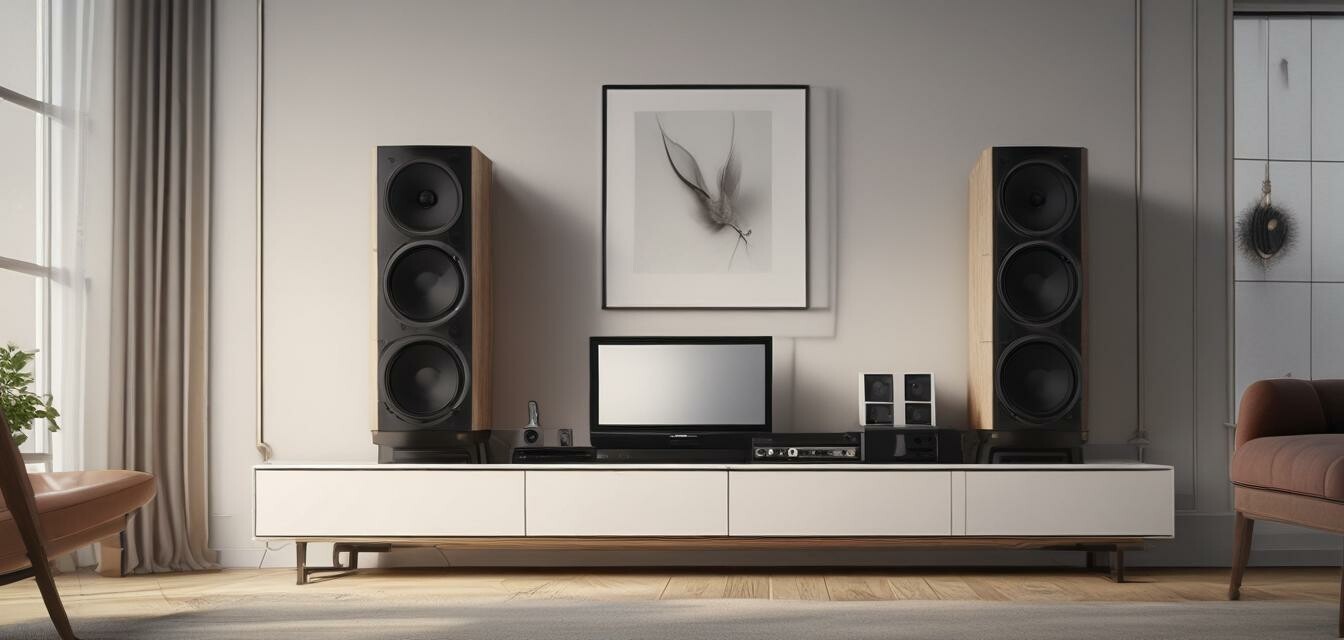
Selecting the Best Speaker Stands for Your Setup
Key Takeaways
- Choose speaker stands that complement your room's aesthetics.
- Height and stability are crucial for optimal sound quality.
- Consider different materials and designs based on your preferences.
- Look for stands with cable management features.
- Invest in adjustable stands for versatile setups.
When creating the perfect audio environment in your home, the right speaker stands play a vital role. Not only do they enhance sound quality, but they also contribute to the overall look of your setup. This comprehensive guide will help you navigate the numerous options available, ensuring your speakers are positioned for optimal performance and aesthetics.
Why Speaker Stands Matter
Speaker stands are more than just simple supports; they are essential for achieving the best sound. Proper placement can minimize resonance and maximize sonic clarity, significantly impacting your listening experience.
Benefits of Using Speaker Stands
- Improves sound quality through optimal height and positioning.
- Enhances the aesthetics of your room.
- Reduces clutter by providing a dedicated space for speakers.
- Allows for better integration into your home decor.
Types of Speaker Stands
Understanding the different types of speaker stands is crucial in making an informed decision. Here’s a breakdown of the most common options.
| Type | Description | Best For |
|---|---|---|
| Fixed Height Stands | Stands that are set to a specific height, providing stability. | Bookshelf and larger speakers in a dedicated listening area. |
| Adjustable Stands | Height can be modified, ideal for multiple settings. | Flexible setups or different room configurations. |
| Column Stands | Feature hollow columns that can be filled for added weight. | Floorstanding speakers needing additional stability. |
| Wall Mounts | Focuses on maximizing floor space by attaching speakers to walls. | Small rooms or minimalistic designs. |
Choosing the Right Height
The height of your speaker stands should align with your ear level when seated. Here’s a quick reference for the ideal height based on room design:
- Living Room: 30-42 inches from the floor.
- Home Office: 24-30 inches for desktops or bookshelves.
- Home Theater: 36-48 inches for immersive sound.
Materials Used in Speaker Stands
The material of your speaker stands can affect both stability and the aesthetic vibe of your room.
| Material | Pros | Cons |
|---|---|---|
| Metal | Durable, modern look, good for stability. | Can be prone to scratching or dents. |
| Wood | Natural aesthetic, can complement furniture. | May not be as sturdy as metal, more expensive. |
| Plastic | Lightweight, economical, and easy to move. | Less stable, can feel less durable. |
| Composite | Good balance of aesthetics and durability. | Can vary in quality depending on the brand. |
Installing Your Speaker Stands
Once you have selected the right speaker stands, proper installation is key to enhancing your audio experience. Follow these steps:
- Choose the best location for your speakers. Ensure they are positioned away from walls and corners.
- Ensure that the stands are sturdy and set at the correct height to match seating position.
- Secure cables neatly to avoid tripping hazards.
- Adjust the speakers’ angles so they face the primary listening area.
Common Mistakes to Avoid
While selecting speaker stands, here are a few pitfalls to keep in mind:
- Picking the wrong height, which can lead to suboptimal sound.
- Ignoring stability, which can risk knocking over the speakers.
- Overlooking aesthetics, which can detract from your room's decor.
- Neglecting cable management, leading to a cluttered look.
Pros of Using Speaker Stands
- Enhances sound quality.
- Improves speaker aesthetics.
- Reduces listening fatigue.
- Offers flexible placement options.
Cons of Using Speaker Stands
- Can be an additional investment.
- May require more space.
- Finding the right fit can take extra time.
Conclusion
Selecting the right speaker stands is essential for optimizing your sound setup. By considering the various types, materials, and features available, you can create an environment that supports both quality audio and a visually appealing space. For more tips on enhancing your audio experience, check out our Buying Guides, or explore specific categories such as Bookshelf Speakers and Soundbars.
Further Recommendations
If you're ready to dive deeper or install an entire audio system, consider exploring our related categories: